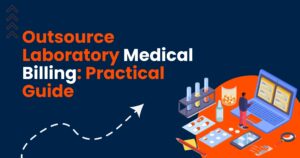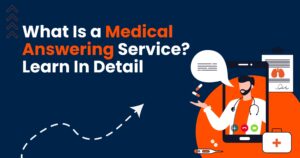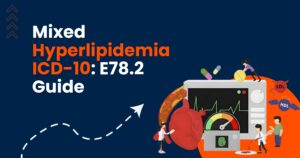In the modern landscape, the healthcare industry increasingly relies on technology to manipulate patient data and streamline workflows. Over-digitization has amplified the need to protect sensitive health information and ensure authorized access across multiple platforms. The role of Healthcare Identity and Access Management (IAM) is a game-changer for information security. This practice encompasses complete verification, authentication and user access management within the medicare system. It is based on granting legitimate appropriate access to sensitive information while restricting all unauthorized users. This article walks you through best practices and delves into how top-notch tools are revolutionizing this space.
Introduction to Identity Access Management (IAM)
A digitally driven world explains IAM as a framework of certain access control policies, procedures and technologies. This approach reflects the right of an individual to have appropriate reach to tech resources. Identity and Access Management is the bedrock of cybersecurity that enables organizations to maintain digital identities and control access to overall systems.
A Report found that 80% of web application attacks utilized stolen credentials, 40% of data breaches involved stolen credentials, and nearly 20% of cyberattacks involved phishing.
5 Key Components of Identity Access Management
Before you jumpstart to the details about IAM, let’s figure out some of the vital components of identity access management in a comprehensive way.
Authentication and Authorization
Authentication is a process involving the verification of credentials including passwords, security tokens, usernames or even biometric authentication. It is about the identity verification of users, devices or applications before granting access to data or systems. Authorization refers to the level of system access granted to valid users with explicit permission. This process helps to implement the successful principle of least privilege across all the platforms.
Single Sign-On (SSO)
Entering the credential on repeat to access systems is a hassle-filled job. SSO adds convenience to the authentication process by allowing users to log in once and achieve access to multiple systems or apps. It eliminates the nuisance of re-entering the credentials. This elevates user convenience while improving security posture by decreasing the number of login credentials individuals need to manage.
Audit and Compliance
It involves the proactive monitoring and complete recording of all user activities to ensure compliance with external regulatory needs and internal security protocols. This process involves regular audits under the entities of HIPAA compliance. It helps to keep a bullseye on suspicious activities within an organization by ensuring strong access control. The end goal is systems and sensitive data security.
Multi-Factor Authentication
MFA is an extended layer of security that requires users to pass through two or more forms of identification before accessing sensitive applications or systems. This additional level of safety reduces the likelihood of invalid access, even in the worst-case scenario of compromised credentials, boosting the overall security posture.
User Provisioning
It involves session management in the form of deactivating users’ accounts and activating access permissions. The core target of this process is to determine the access level of every user entirely based on their roles and responsibilities. Once the assigned role is finished and the access is no longer required, it’s time to disable or modify the accounts, thus curtailing the likelihood of illegitimate access.
Identity Access Management in Healthcare|Importance
The healthcare industry is more prone to targeted cyberattacks. Managing susceptible patient data is a crucial process. In a digitally volatile world, implementing comprehensive healthcare access management is crucial more than ever before.
The typical cost of a data breach across industries was $4.45 million, yet the average financial cost of a healthcare data breach left the world in shock by touching $10.93 million in 2023.
Let’s explore the significance of IAM in the medicare sector.
Protecting Patient Data
The role of IAM is reflected in the confidentiality and safety of EHRs and personal health information (PHI). The robust access management solutions help protect sensitive data from invalid access and potential cyber incidents.
Eliminating Insider Threats
The limited access to sensitive information based on roles and responsibilities enables IAM systems to prevent ungranted entry by contractors, employees, or third-party vendor access. This action is indispensable to circumvent risks associated with insider threats in healthcare settings.
Ensuring Regulatory Compliance
Healthcare organizations leveraging an EHR solution with IAM integration is a critical aspect of upholding the reliability of medical records. Adherence to strict protocols such as HIPAA, GDPR, and HITECH ensures that access management procedures are properly enforced, reducing the risk of legal and monetary penalties.
Improving Operational Efficiency
A streamlined access management system reduces the administrative workload and increases workflow efficiency. It oversimplifies user provisioning and de-provisioning, allowing healthcare providers to more emphasize on patient treatment rather than admin level duties.
5 Key Steps to Build Healthcare IAM System
While IAM has several facets across various healthcare processes, an organization needs to develop an initial strategy via proper planning, operational function, and implementation methods. By envisioning a ground plan for enhancing the IAM methodology, providers can ensure higher cybersecurity in healthcare, minimal downtime, and seamless program functioning. The foremost aspect is that an IAM should be implemented in small modules rather than aiming to launch a comprehensive plan overnight. IAM is a continually evolving journey. This process is based on five steps. Let’s break down the details.
Assessment of Current Scenario
The preliminary step is to assess and analyze the current data, apps, systems, procedures, and roles. Within the ambit, the next step is to focus on multiple aspects such as MFA, federation, Single Sign-On (SSO), and delegated administration. Another critical move would be to boost organizational Identity Lifecycle Management (ILM) maturity. It reflects on automating identity processes from creating and managing user identities and removing identities to user access. Most healthcare organizations falter at providing third-party vendors access via firewalls.
A Roadmap with a Clear Vision
After completing the first step of analysis of various systems and processes, the next key step is to frame a concurrent strategy for implementation. It includes all the vital metrics essential to gauge the plan’s effectiveness from building touchpoints, connecting with the important stakeholders, and measuring success rate via KPIs and relevant data is essential.
Building a Plan
This stage explores setting up inventory by examining all the key resources, financial plans, business impact, and innovation. From fleshing out the roadmap, it incorporates timelines with milestones, and carving out the flexibility for adjustments if required. This step allows healthcare providers to realize the entire investment required for implementation while considering the different priorities at the same time.
Execution Phase
It involves the completion of various phases of the IAM program and integration across the new system or technology ties with other systems. Before the IAM is fully executed, specific steps need to be taken or there could be future challenges in value-based healthcare. Hence, plan execution, measuring the ROI, and knowing the full impact are imperative for the higher efficiency of IAM’s program.
Measuring ROI
This step is the cornerstone of the plan where the maturity level of the IAM program is finally achieved. It includes the assessment of the process. It involves fixing any issues, re-tracking to check the implementation, and making adaptations accordingly. The vision accomplishment needs to identify the next level of IAM maturity and pool the needed capital to complete it.
What are the Challenges in Healthcare IAM?
Without exploring the vital obstacles encountered implementing healthcare access management may jeopardize the entire vision behind having an efficacious and fully functional IAM system. Let’s get to a snapshot of the key possible pitfalls.
- Integrating IAM solutions within complex IT environments can be brutally challenging.
- Managing access permissions with employees, contractors, and temporary workers regularly joining or leaving is a critical job.
- Ensuring IAM systems are fully compliant with the complex regulatory frameworks while meeting the evolving needs of remote patient monitoring systems can be a significant challenge.
- Allocating enough resources to IAM without neglecting other critical areas of healthcare delivery including advanced cybersecurity with the realities of operational costs presents a daunting hurdle.
Best Practices for a Healthcare IAM System
Organizations should adopt effective practices specially customized to their requirements. This helps to address the difficulties of healthcare access management. One of the biggest revolutions in healthcare systems is ready to touch the ground in the form of contactless palm scanning tech. This is a big step for secure identification and access management. Let’s capture the list of some of the key practices to implement better patient engagement strategies.
Utilize Advanced Automated IAM Tools
Investing in automated solutions can streamline medical operations including user provisioning, compliance reporting and access reviews. Automation significantly reduces administrative burden and also improves security policies.
Conduct Access Audits Regularly
Regular audits are essential to keep a check on user access rights. It ensures that permissions directly align with the current roles and responsibilities. This practice highlights discrepancies if any exist and revokes the access when no longer needed.
Implement Advanced Encryption Methods
The activation of multiple forms of authentication alerts the hackers, reducing the likelihood of unauthorized access. MFA is an added layer of protection such as strong password encryption combined with biometric verification.
Integrate Role-Based Access Control
Access permission should be granted based on the assigned roles rather than focusing on individual identities. It simply goes like a nurse should have a different access level than a physician or an admin person. This ensures information access based on the job needs without neglecting the safety protocols.
Implement Privileged Access Management (PAM)
This practice involves the cybersecurity strategies and latest technologies to have control over elevated ‘’privileged’’ access permissions for individual identities, accounts, procedures and systems. This helps healthcare organizations significantly condense their attack surface.
Provide IAM Training for Organizational Staff
Organizations should arrange regular training sessions to educate their on-board staff. This helps workers understand the importance of IAM for secure access controls across all the platforms in the healthcare sector. The likelihood of human error is also reduced this way.
Understand Emerging Trends|Healthcare Identity Access Management
As technology expands its horizon, so too does the capability landscape of IAM solutions in the healthcare industry. Some of the tipping trends are uncovered here.
- AI-powered IAM is an excellent way to enhance the abilities of IAM systems by identifying anomalies and predicting security risks.
- Biometric authentication involves the use of unique biological traits such as fingerprints, voice recognition, and face recognition for secure access control.
- Zero trust architecture is gaining immense traction in the healthcare market as this model operates on the golden rule of “never trust, always verify” which means continuous authentication and validation.
- Cloud-based IAM strategies offer higher scalability, enhanced accessibility and flexibility, making this technique ideal for hybrid healthcare ecosystems.
- IoT device safety is a way to ensure secure access over multiple connected medical devices in the healthcare paradigm, ensuring the integrity of the operations.
- Patient identity management is a flourishing trend aiming to restrict patient interactions with healthcare related platforms.
As the medical industry continues to embark on the path of digital innovation, IAM will remain at the heart of cybersecurity and operational excellence. The integration of advanced tech like AI, machine learning and blockchain gives a cast-iron guarantee to further boost the potential of IAM systems. It ultimately allows healthcare companies to stay ahead of growing cyber challenges and compliance demands. By leveraging IAM practices and integrating the solutions of professional service providers, healthcare organizations can win patient trust and build market worth.





